Whoever coined the phrase “records were meant to be broken” obviously owned a Corvette. The iconic American sports car’s history is filled with record-setting feats, newly reached milestones, and unmatched performance. At 9:56 a.m. on March 2nd, 1990, Tommy Morrison and his team wrote yet another chapter in the Corvette’s already lengthy history of winning tradition.
In 1940, Ab Jenkins set the 24-Hour Endurance Run World Record, posting an average speed of 160.18 MPH. By 1989, this same record had stood for almost a half-century, proving to be a seemingly impossible goal for all who sought to conquer it. Ford had attempted to topple the record with a Mustang in 1969, Mercedes made their attempt in 1977 with a C111, and Audi threw their hat into the ring in 1988. Still,none of these runs were successful..
Peter Mills, an automotive public relations specialist, had become utterly intrigued by the longevity of Ab Jenkins’ long-standing record, and grew increasingly consumed by the thought of locating a car that could beat it. In 1989, Jenkins had a chance conversation with Stuart Hayner, renowned endurance racer and winner of the 1988 Driver’s Championship in the Corvette Challenge. As they spoke, Mills shared a Porsche GTP team member’s comments that their 962’s did not possess the durability to defeat the 1940 record, insisting that it was insurmountable.
These sentiments drove Hayner to pose the idea that a ZR-1 Corvette might have the power needed to topple the 50-year-old milestone. This prompted a phone call to John Heinricy, who was the Manager of Corvette Development at that time. He was also an experienced endurance racer. Both Hayner and Heinricy had raced Corvettes under the toolage of legendary Corvette racer Tom Morrison. Ironically, Morrison had been considering the same idea and had even discussed the idea of a record-breaking run in a ZR-1 with GM engineer and racer Jim Minneker.
As the talk of undertaking a feat of this magnitude began to gain momentum, members of the GM design team delved into the ZR-1’s ability to withstand the rigors of this 24-hour torture test. Jim Minneker was confident the ZR-1 could handle the challenge, having mandated 24-hour stress testing as part of the ZR-1’s development.
After extensive testing which included putting hte ZR-1 thru 24 hours of continual operation to verify its sustainable durability, a plan for taking down Ab Jenkins’ long-standing record commenced.
From the offset, Morrison began to gather sponsors for the record-breaking attempt, knowing that accomplishing such a feat would come at a tremendous financial cost. Meanwhile, Minneker provided the ZR-1 that had been used in development for further on-track testing.
As more rigorous testing took place, a couple of mechanical issues quickly became evident. First, a need for specialty tires that were capable of withstanding prolonged speeds over 180 MPH was identified. This led to a conference between John Heinricy and the Goodyear Racing Tire development team. At the time, no 17-inch production Goodyear tire could fit within the fenders of the ZR-1. This led Goodyear to develop and produce a specialty 17-inch racing tire to meet the specifications of the upcoming event.
It was also noted that wheel bearing temperatures ran well outside of specification. It was theorized that the heat generated from 180-0 MPH stops made when entering the pits was radiating inward to the car’s hubs and bearings, causing overheating and displacing extensive amounts of grease in the process. In response, Delco Moraine, the bearing manufacturer at the time, began packing all bearings with Mobil 1 synthetic grease for improved heat dissipation and better lubricant retention.
While the mechanical issues proved to be a relatively minor problem, locating the extensive sponsorship required to continue forward with the endeavor was not. Morrison worked tireless to seek out the necessary financial contributions to sponsor the cause. In the end, Goodyear, Mobile 1, and Electronic Data Systems all offered financial support, product donations and provisions of manpower.
The team also located a suitable destination at which to attempt their record-breaking run. Racing driver Bobby Unser, who had also attempted to break this same record in 1988, suggested the use of the Firestone Tire Company test facility in Fort Stockton, Texas. After a quick assessment of this site, it was agreed that the track would be used.
Morrison began assembling his team of drivers. In short order, Morrison had put together a worthy team that included John Heinricy, Stu Hayner, Kim Baker, Jim Minnerker, Scott Allman, Klaus Niedzwiedz, and Scott Lagasse.
Heading To Fort Stockton
With their mechanical issues remedied, the funding secured, and a dream team of drivers assembled, it was time for the teams to travel to Fort Stockton. As every member of the team and support staff began to arrive on location, a frantic effort to prepare the track and accompanying facilities commenced. Lights were positioned, communications equipment was staged, and the cars were inspected one, final time.
With preparations complete and the initial prospect of decent weather, Morrison knew that the time was right. March 1st would be the day of reckoning.
As the morning of March 1st arrived, the team was met with less than ideal weather conditions. Crew members ate breakfast and began to prepare for the trials ahead despite 35-degree temperatures and light snow showers. Morrison believed that as afternoon temperatures climbed, the teams concerns would be alleviated.
In addition to putting a ZR-1 on the track, it was also decided that a 1989 L98 coupe would take the track as well in search of its own place in history. Both the ZR-1 and L98 were given final inspections and fuel in anticipation of the moments ahead. SImilarly, the track was given a last-minute inspection and a warm-up lap commenced.
Both the ZR-1 and the L98 C4 Corvettes remained stock in most facets of design. Any modifications were minimal and intended to bolster the vehicle’s safety and durability. The most notable of the changes made to the cars was the installation of a 48-gallon fuel cell that necessitated the removal of the rear anti-sway bar, the replacement of 3.54 gears with 3.07s, and the slight lowering of the front end.
The cars were also fitted with Samsonite suitcases filled with spare parts and tools. Under FIA sanction, all repairs would have to be conducted by the vehicle’s driver, and everything needed to complete such a repair must come from the contents of this suitcase. Though several non-consumable parts were present, the teams were confident that they would not be needed.
A Record Run Begins
At 9:56 am, both cars left the starting line of the Fort Stockton, Firestone test track. As the run continued through its first several hours, feelings of anxiety toward the attainability of completing a task of this magnitude began to lift. Both cars were running flawlessly, and pit stops that occurred at intervals of approximately every 80 minutes revealed no issues.
However, this did little to alleviate the teams’ concerns over the weather. Afternoon wind gusts frequently reached 25 MPH, and a mixture of drizzling rain, sleet, and light snow continued to fall. This only added to the already lengthy list of safety concerns that sat front and center within the minds of everyone involved.
The weather was not the only factor that remained a threat to the cars and crew. There was also concern that one (or both) of the cars might hit an animal crossing the track. The Fort Stockton test facility was located in a rural area of the state and was home to many animals including deer, coyotes, and javelinas. Although efforts to prevent such an animal strike had been put into action (as the crew drove around the outer bounds of the facility’s perimeter firing shotguns into the air), the fear of a collision at 190mph was still on everyone’s mind.
At the six-hour mark, five individual FIA records had been conquered. The 100, 500, and 1000 kilometer records were now credited to the L98 Corvette as were the 1- and 6-hour records. With these milestones achieved, the L98 returned to the pits, where it was loaded for immediate transport to the Geneva Auto Show. Meanwhile, the ZR-1 soldiered on toward the as-yet-to-be-broken 24-hour speed endurance record.
As night fell, the track conditions became treacherous. Patchy fog and limited visibility had everyone on edge. In the absence of the moon, there was little lighting to aid the drivers as only the track’s turns had been lit. As speeds approached 200 MPH in the straightaways, the ZR-1’s headlights offered little help, as any obstacle that could have been encountered would have been overtaken before the car’s driver could recognize the impending threat.
Despite the treacherous conditions, the ZR-1 carried on in near flawless fashion for the remainder of the night. The only notable difficulty that was experienced came in the form of an imbalanced tire during Jim Minneker’s time at the wheel. Though this irregularity caused violent shaking, it was quickly remedied by a momentary pit stop.
As night gave way to daybreak, the ZR-1 was running as everyone had hoped and emotions were riding high. Finally, at 9:55:12 AM the nearly 50-year-old 24-Hour World Land Speed Record was finally conquered as team lead Jim Morrison sat behind the wheel.
However, one record remained for the taking.
As the ZR-1 reached the long-awaited 24-hour mark, the car had run 4200 miles around the track thus far. This left the crew 800 miles shy of the 5,000-mile record set by a Mercedes C111.
The decision was made to push on, and the run continued in flawless fashion for the bulk of the remaining miles. Then, with only eight miles remaining, the ZR-1’s coolant temperature began to spike, and a quick under hood assessment revealed that a radiator hose had been rubbed through by constant contact with the car’s fan shroud. Within minutes, repairs were made and the run continued.
At 28 hours, 46 minutes, and 12.426 seconds after the historic run had begun, it came to a momentous and victorious conclusion. All three world records were broken and multiple FIA International records had succumbed to the ZR-1 and the storied crew who dared to dream big enough to break records and become legends.
The Aftermath
With the ZR-1 and L98 Corvette firmly cemented in the history books, all that was left was to turn the automotive world on its head with news of the pair’s triumphant run. Chevrolet’s Mark Kramer sent out a press release detailing the ZR-1’s record-breaking status, but a bigger marketing plan was already in the works. On June 25th, 1990, Chevrolet ran an ad in Automotive Magazine stating, “In 24 hours, we did what nobody could do for 50 years.”
When asked about the run, team lead Jim Morrison said, “It was very difficult to achieve, but I’ve owned Corvettes since 1962 and there’s nothing I wanted to do more than break this record.” Morrison continued to race ZR-1’s in endurance races nationwide, taking on some of the most challenging and renowned events on the performance car endurance circuit.
Today, the 24 Hour World Land Speed Record setting ZR-1 remains on display at the National Corvette Museum, where it has been since the facility opened in 1994.



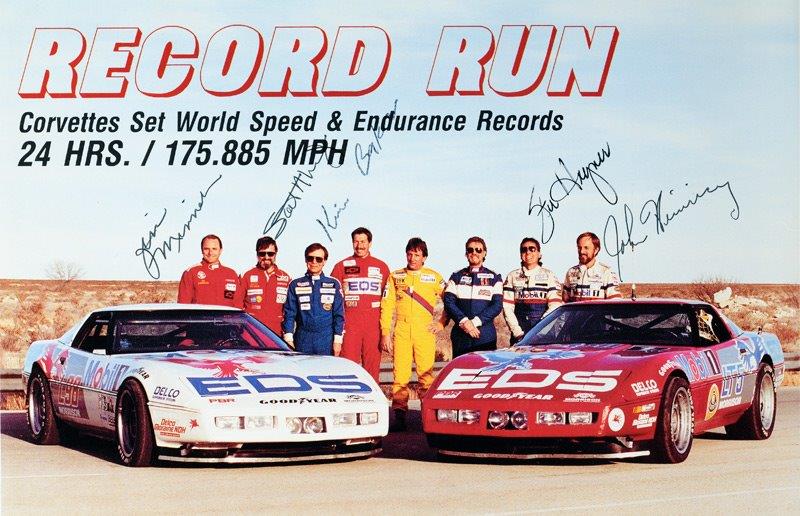


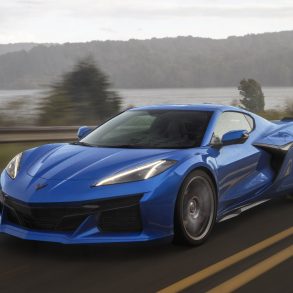

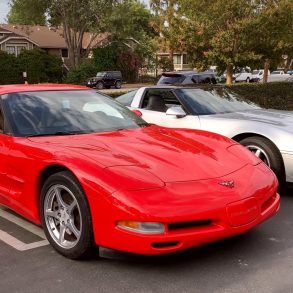
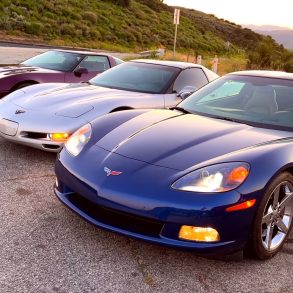
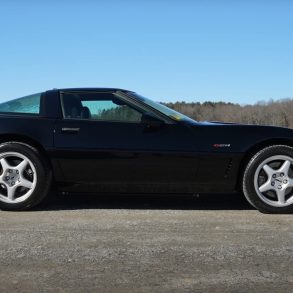
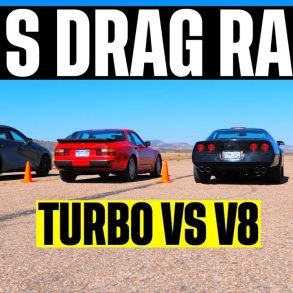
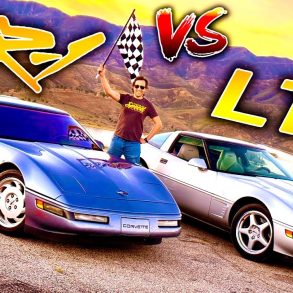

Nice article, I am very proud to own a 1990 ZR-1, the fact this car in stock trim was able to break these records is incredible. I firmly believe no other vette could have done this. Still “King of the Hill”.